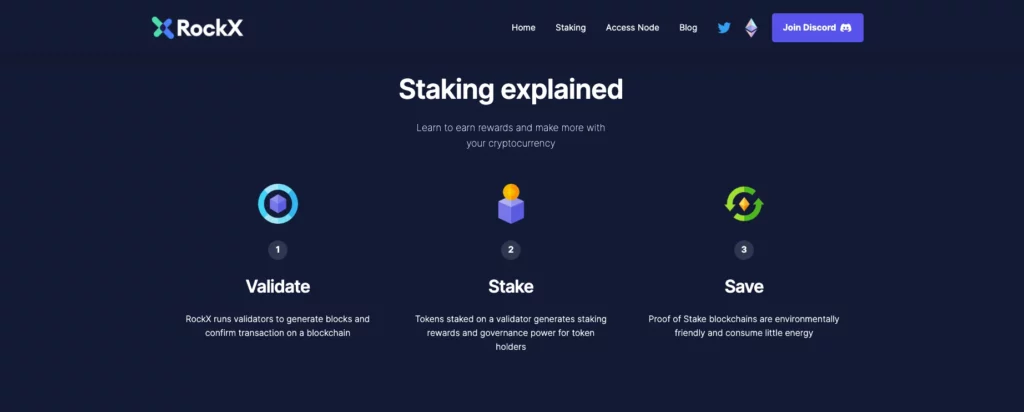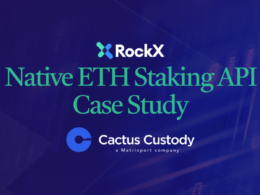The cryptocurrency markets are currently booming, with the masses joining in on the cryptocurrency craze and trying to make some money.
It isn’t hard to see why cryptocurrency is all the rage: the astronomical increase in its prices. For instance: ETH was worth less than $90 in March 2020 and went on to hit $4,880 in November 2021. But this highly volatile nature is a double-edged sword. Since hitting ATH late last year, ETH has lost more than 72% of its value.
Imagine if there were a way to generate a passive income from your coins without worrying about price fluctuations or having to sell the coins or buy any special equipment. Sounds too good to be true? Welcome to the wonderful world of Crypto Staking!
When it comes to Ethereum, you can protect yourself from these ups and downs by putting your crypto assets to work through this process called staking, where you lock your coins for a certain period.
We get it. You must be wondering, “How do I stake ETH?” In this article, we’ll show you how to stake in less than 5 minutes.
What is Staking?

We know staking can be a bit confusing at first, so we want to make the process as seamless and simple as possible. Let’s jump right in!
Staking is a process of validating the Ethereum blockchain, which requires you to have some Ether in your wallet. In return, the validator receives rewards and transaction fees.
It is an excellent opportunity to earn passive income while helping secure the Ethereum Network. It allows you to “delegate” or “vote” for a node. The delegate is usually a pool or group of nodes that will be processing transactions. By staking your Ether, you both help secure and validate transactions on the Ethereum network.
The underlying mechanism here is the proof-of-stake (PoS) consensus mechanism, where stakers or validators lock a certain amount of tokens for a period during which they cannot be used. In exchange for this, stakers receive rewards calculated in percentage yields, denominated in the native cryptocurrency. This can be seen as putting money in a savings account but earning a much higher yield.
By requiring validators to have “skin in the game” through staking, the PoS method ensures they act honestly and for the good of the network.
Benefits of Staking

Ether has been a hot topic lately as its adoption grows rapidly. Recently, it had a significant upgrade, “The Merge,” which officially shifted its consensus algorithm from proof-of-work (PoW) to proof-of-stake (PoS).
Under this new method, validators stake capital in the form of ETH into a smart contract on Ethereum. Staking provides several benefits, including security and financial incentives.
Here, you receive a percentage of the network rewards for helping to secure the network and validating transactions. This way of making money off of Ether has become a popular way to make a profit in crypto without trading coins. It is actually a great way to earn passive income with any PoS cryptocurrency.
Users have to “lock up” their Ether (the native currency), which means they can no longer send or receive it. But you get to choose how long you want to stake your coins. The basic funda here is that the longer you stake, the more the rewards, although it also means the more risky your investment is.
This makes staking a good option for investors interested in generating yields on their long-term investments but who don’t want to deal with short-term fluctuations in price. But this, of course, means working with companies with a positive reputation and high-security standards. And always invest and stake that you can afford to lose.
Not only do you earn passive income and support crypto projects you like, but staking is pretty easy to get started as well. So, let’s see how to stake Ether and start reaping the rewards in a matter of minutes.
How to Stake ETH with RockX?

RockX is a non-custodial staking service for ETH, meaning that all the crypto assets stay in your own wallet. It is a gateway to Web 3.0, providing institutional-grade blockchain nodes for users to build, scale, and stake easily.
As one of Asia’s go-to non-custodial leaders for institutions and high-net-worth clients, RockX provides both liquid staking, which allows you to use your crypto while staking, and stacking-as-a-service, which lets you earn more tokens. More than $900 million are being staked using RockX, and $90 million is earned in annual yield by the company’s customers.
RockX boasts of being trusted by Amber, Lido, StaFi, LongHash Ventures, Alphabit, Signum Capital, Valour, Matrixport, and others.
To provide the best staking experience and with high security, RockX has collaborated with several protocols.
Before the Merge, straight staking was available through the ETH beacon chain, which requires at least 32 ETH to be locked up for as long as the unstaking is allowed by the network.
Liquid staking has been made possible through Lido and StaFi, which doesn’t have any limit on the amount of ETH one needs to stake. Here, you receive stETH in exchange for the amount of ETH locked, which is tradeable on the DEX Curve.
RockX runs validators to generate blocks and confirm transactions on a blockchain. As such, it is one of the validators selected by Lido. Users can earn about 5% APY on their ETH deposits.
Leveraged liquid staking is another option that is made possible through StaFi. Here, you need at least 4 ETH to get started. While tokens are locked until Ethereum allows unstaking, the rewards here are doubled.
This way, the RockX ecosystem offers a safe and reliable way of staking ETH and other PoS protocols like Polkadot and Solana.
How to Stake ETH Through Lido?

Lido is the biggest and most popular staking service on Ethereum, where you can earn block rewards from staking your ETH. Just purchase a small amount of ETH and stake it through Lido to get a passive income stream.
You don’t need 32 ETH to get started because Lido pools your ETH with other people’s funds until the pool reaches 32 ETH. Lido will then set up a validator node by depositing the ETH into Ethereum’s staking contract and proportionally share staking rewards with participants.
For this, Lido adopts a transparent, low-cost, and high-efficient staking protocol to form a global staking pool and shares block rewards with the community members.
It is mainly known for its liquid staking. If you are wondering what liquidity is, it is how quickly you can sell your coins. In the crypto world, it’s the most critical aspect to consider. When staking, you lock your coins and make them unusable for a certain time, but in liquid staking, you can keep using the coins.
This is achieved by issuing stETH to stakers, representing the amount of ETH staked at a 1:1 ratio. Besides no minimum deposit or lock-up periods for staking and the ability to use stETH like regular ETH, the staking rewards are received daily here.
Conclusion

After reading this guide, you should clearly understand how to stake your Ethereum tokens. It’s easy, but it’s not free. You need a minimum amount of ETH you can stake, and they must be locked for a certain period.
But it indeed has its benefits, and that’s why staking ETH is quickly becoming a popular investment strategy, which allows you to earn passive income while being unbothered by short-term price volatility and power through bear markets. At the same time, you contribute to the security of the network, which houses billions of dollars in decentralised applications (dApps) and acts as the foundation of DeFi, NFT, GameFi, and Metaverse. As always, DYOR and make sure you understand the risks of staking before fully committing yourself to it.









